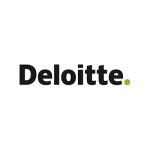Tax teams around the world are being asked to expand their scope. Increasingly, they are taking on a broader advisory role to their stakeholders, addressing issues as wide-ranging as technology transformation, remote and hybrid workplaces, and the evolving roles of humans and machines in corporate tax services. To do this successfully, tax leaders will need to attract and develop skills not traditionally associated with the tax department—moving beyond rules-based compliance and reporting into advising on business and workforce strategy.
While some are effectively leading their organisations through these changes, others may find it difficult to shift their focus from transactional to relational. The ability to adapt has profound implications for the future of the tax function—on where and how the work gets done, and the skills required to navigate and deliver meaningful advisory services to a broader group of stakeholders.
Driving the need for change
Recent Deloitte research shows that tax departments are redefining themselves in response to several major market trends:
Digital tax administration is moving fast, and revenue authority demands for digital tax administration will have an impact on tax operations;
Data simplification and reduced resource costs will need to be a top priority to transform tax;
To achieve lower cost models, many CFOs are opting to outsource talent needs;
Demands for cross-business advisory services will require tax leaders to upskill and diversify their teams; and
Hybrid and remote work is the new norm, and these models are here to stay.
Addressing gaps with a new tax talent strategy
Bubbling to the top of all this change is the need to develop new skills in both tax technology and business strategy. At a minimum, the modern tax professional should be conversant in data management, analytics, and basic software development. Tax teams must also move beyond their comfort zones, becoming expert advisors who engage systematically and strategically with other parts of the business.
To close the talent gap and develop a new tax talent strategy for the future, start by evaluating the why, who, how, and where of your tax department.
Why?
What are the business imperatives and strategic goals of your organisation and how will your tax department enable these?
Who?
Which talents, skills, and roles do you need to deliver the business strategy and what new skills are required to support the business and employees?
How?
What talent sourcing approach is best for you—buy, build, or borrow?
Buy: Focus on talent acquisition—sourcing, selecting, and onboarding the talent you need worldwide. Tax leaders wanting to cultivate an advisory mindset will need to recruit tax talent with business acumen, consulting agility, and relationship savviness.
Build: Intentionally build and augment the skills and capabilities of your current workforce to support tomorrow’s services. To upgrade soft skills such as presentation and communication styles, you could use coaching, on-the-job training, or classroom instruction. Finding ways to bring team members into closer proximity with other parts of the business can also help generate collaboration opportunities.
Borrow: For talent you lack in-house, tap a third party, perhaps through outsourcing or secondments. Tax leaders should evaluate which expertise is core to the business and should therefore be handled in-house, and which niche expertise may be handled on an as-needed basis by specialised external advisors.
Where?
Where and how will talent be deployed, immediately and in the long term? Onsite, remote, or a hybrid approach?
Turning strategy into reality
Moving to a new tax talent model may not always be simple, but it’s critical for the future of tax work. Start with these considerations:
Have a change mindset. For a successful implementation, tax teams must both understand and manage change. Your team may need to adopt new mindsets—for example, moving from a rules-based tax approach to an advisory role, or from domestic, potentially siloed, tax functions to a multidisciplinary global talent model.
Engage with stakeholders. Any new approach to the tax talent model will require early buy-in from business, tax, and finance functions. Educate yourself and your stakeholders on the need for change and quantify the business benefits as early as possible.
Evaluate talent gaps. How do your team’s talent gaps compare in terms of size, scale, and impact? Use your answers to prioritise needs and find the best solution for your situation. For the foreseeable future, the most likely result is a blended operational model—80% of our survey respondents anticipate combining outsourced, in-house, and co-sourced tax operations. The precise contours will be determined by your specific tax processes, business objectives, and geographic location.
Build out a new service delivery model. Once you’ve assessed the range of services you’ll need, you can start building out your organisational structure, establishing new roles, and making or deepening connections with new vendors and stakeholders.
Consider technology. Digitisation is key to any effective tax department. From advanced automation to robotics and data management, solutions and infrastructures abound. It’s crucial to select the best fit for your needs.
Add new training curricula. While technical training remains a must, there's an increasingly urgent need to train tax professionals in areas such as facilitation and project and relationship management. This will help them adapt to rapid changes and thrive in increasingly common consulting roles.
The future of tax
With nearly every aspect of the tax business and its ecosystem in flux, tax leaders face a major challenge. Expand the boundaries of tax’s remit in the business, secure the resources and talent to execute it, and update the underlying technology infrastructure to maximise efficiency, flexibility, and transparency. The good news is that transformation is possible—and the tools you need to achieve it are progressively at your disposal.













